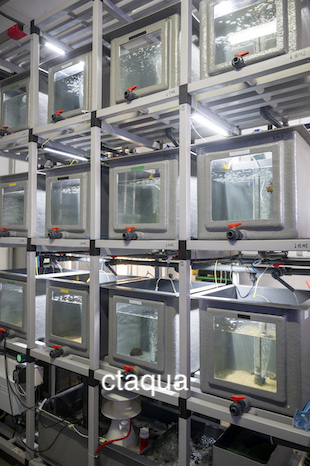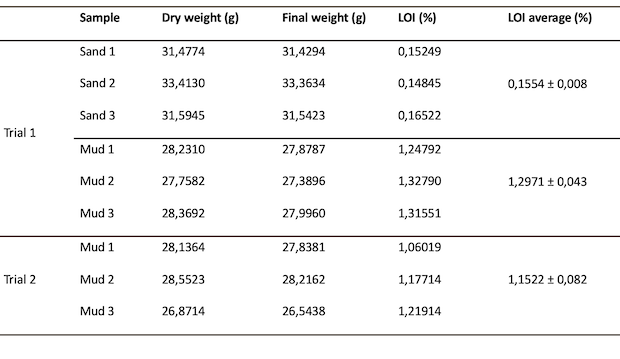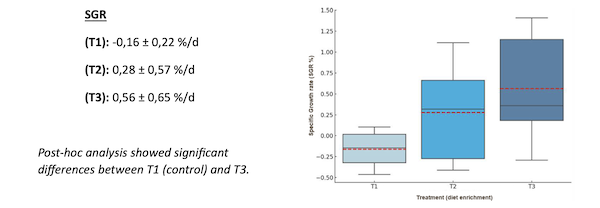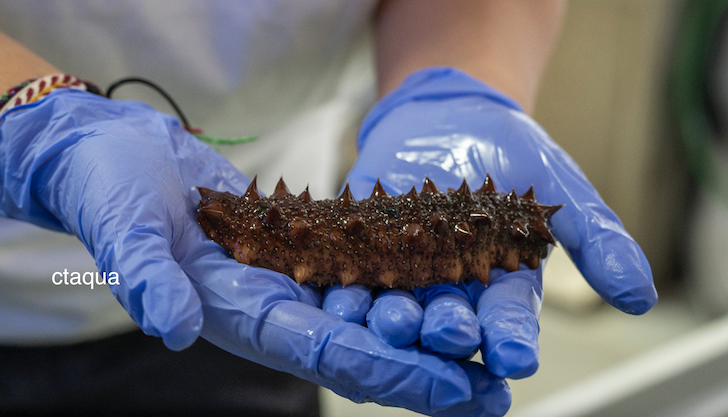Pilot action (First phase) Optimization of Culture Conditions for Holothuria arguinensis: feeding and growth assays.
- Introduction
Recently, advances have been made in culture techniques for Holothuria gennus, with improvements in reproduction and captive rearing methods. Techniques developed include spawning induction (Venancio et al., 2021), larval and juvenile management (Madruga et al., 2023; Sousa et al., 2023) and specialized feeding (Domínguez-Godino and González-Wangüemert, 2019a; Rodrigues et al., 2023), which have allowed optimizing survival and growth rates. Factors such as substrate conditions, water quality and stocking density are determinants of culture success (Domínguez-Godino et al., 2015). In this sense, key areas for future research, such as nutrition, are identified that can address critical knowledge gaps to further improve production.
CTAQUA oversees the impact assessment of different substrate and diet combinations on the growth of Holothuria arguinensis in a recirculating aquaculture system (RAS). Specifically, i) Determine which of the selected substrates (sand, mud, mixture of both) promotes the highest growth and survival of H. arguinensis ii) After previous results, to analyze the efficiency of two different diets in combination with mud as substrate, analyzing their influence on growth.
2. Material & methods
Individuals of H.arguinensis (n=30 ; 129 ± 32,34 g) were collected at the sandy-rocky intertidal of Chipiona, Cádiz (36°44'31.6"N 6°26'19.5"W) under authorization of Andalusian government and carried to CTAQUA facilities.
Culture conditions:
- Water flow of each experimental unit was 1,6 ml/s (two renovations per day)
- Water recirculation was 90% in RAS with a renewal of external flow of 10% daily
- Photoperiod 14:10 (L:D) simulating natural conditions
- T 20-22 ºC ; O2 > 5mg/L
- Light intensity 40 μmol photons/ m2 s1
 Trial 1: Assessment of different substrates in growth and survival of H.arguinensis
Trial 1: Assessment of different substrates in growth and survival of H.arguinensis
The duration of the trial was 28 days where three treatments (n=3) were tested (where T1=control)
T0: treatment with no sediment (just diet enrichment), T1: substrate was 100% sand + diet enrichment; T2: substrate was 100% mud + diet enrichment; T3: substrate was 50% sand+ 50%mud + diet enrichment).
Considering diet enrichment as Ulva sp. + commercial fish feed (50:50) added to each 48h at 3% of holothuria biomass (mod Robinson et al., 2015).
Trial 2. Diet enrichment assessment in growth and survival of H. arguinensis
The duration of the trial was 28 days where two treatments (n=4) were tested
Substrate was 100% Mud for all the treatments, T1: without diet enrichment T2: Ulva sp. + commercial fish feed for tilapia (ALLER PRIMO FLOAT (3 mm)) (50-50%); T3: Chaetomorpha sp. + commercial fish feed for tilapia (ALLER PRIMO FLOAT (3 mm)) (50-50%)
The diet enrichment was added to each 48h at 3% of biomass (mod Robinson et al., 2015).
3. Analysis
Specific Growth rate (%/day -1)(Ricker, 1979) ![]()
Mortality rate (%)= 
Organic matter on sediments was analysed using the Loss on ignition method (LOI) (%)
Statistic analysis ANOVA and Post-hoc tests
4. Key Results
Organic matter analysis of the sediment provided information on the highest OM content depending on the sediment nature. Mud showed relevant differences in OM values.

The stadistical analysis (one-way ANOVA) of Specific growth rate in trial 1 showed No significant differences were found between the rest of the treatments (ANOVA: p=0.155). However, the treatment with no substate (T0) was the least efficient method for the rearing of H.arguinensis.

The statistical analysis (one-way ANOVA) of Specific growth rate in trial 2 showed significative differences between treatments (ANOVA: p=0.033).

5. Conclusions
Trial 1
- The absence of substrate/sediment limited the growth of H. arguinensis. Both muddy and sandy sediments are suitable substrates for the cultivation of this species, jointly as well as separated. Even though mud showed a higher organic matter volume, no significant differences were found between substrate type. The mud, with its high content of organic matter provides the necessary nutrients for the feeding of H. arguinensis, while sand provides physical conditions that favor its development.
Trial 2
- Diet enrichment demonstrated to be a key factor in the growth of H. arguinensis. The results showed that the enrichment composed of Chaetomorpha sp. and commercial feed was the most effective in promoting the growth of individuals (combined with mud as substrate), with significant differences with respect to the control group.
GENERAL LEARNING
- Presence of bacteria was detected as fouling indistinctively of the sediment type. However, the experimental unit balanced itself throughout the development of the experiments so no action should be taken (Just 4,17% of mortality rate = 1 animal of 24).
- Substrate (indistinctively) as well as diet enrichment were not feasible as feed for H. arguinensis separately. However, The combination of diet enrichment and substrate showed positive results in growth.
Nutritional profiles of H.arguinensis will be analysed to confirm that the nutrition was satisfactory comparing to the natural feeding pattern.
AQUAFISH 0.0 is a project funded by ERDF through the INTERREG Atlantic Area 2021-2027 programme (project code EAPA_0062/2022).


